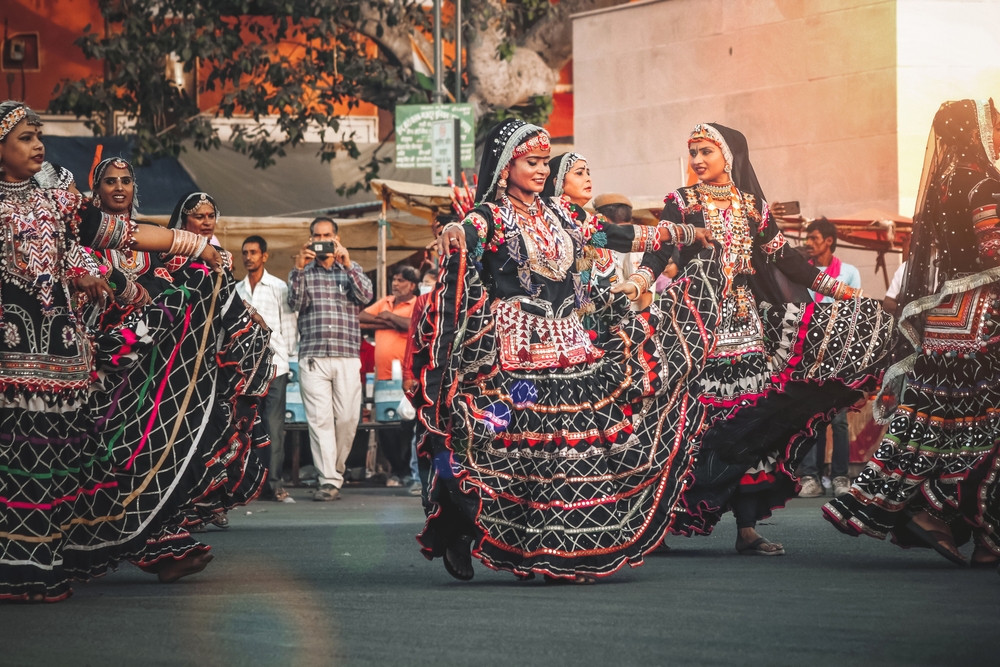
Throughout the history of humankind, dance in world religions has always served as a form of expression. Whether as part of a performance enjoyed by an audience or part of a participatory event such as a party, humans have used body movement to communicate and connect with one another, tell stories, set the mood, and convey emotions. Considering how much expression and communication factor into religious rituals and practices, it should come as little surprise that dance has been used for worship, celebration, and ceremony. From ancient times to the present day, dancing is a part of many of the world’s religions.
Dance in World Religions: Candomblé
Candomblé is a syncretic faith that combines elements of Yoruba religions and Roman Catholicism. It was practiced by enslaved Africans, primarily in Brazil. Within this religious practice, followers often practice ecstatic dancing, where they “give in” to the rhythm and pulse of the music instead of following a particular set of steps or choreography. It is common in Candomblé for worshippers to be moved to dance under the influence of orishas. These orishas are guardian deities, analogous to Catholic saints, who inform the personalities of Candomblé practitioners.
Christianity
Although dancing has been forbidden in some sects, this activity has long been a part of various Christian denominations as a form of praise, worship, and celebration. The early Christian church generally saw dancing as a meditative practice and a means for unifying worshippers. Circle dancing, wherein participants would join hands and move in a circle, is symbolic of a spiritual connection to one another through Christ.
It’s not uncommon to see choreographed routines presented as a form of praise and worship, especially in Black congregations. These performances often serve as offertories or selections, similar to a choir or worship team singing to edify their audiences. Sometimes praise dancing accommodates congregational singing. In some Protestant churches, worshippers may break out in a quick step, informally referred to as “shouting” or a “praise break.” This form of dancing is often reminiscent of ecstatic movement.
Dance in World Religions: Hinduism
Various Indian classic dances such as Bharatanatyam, Kathak, Odissi, and Mohiniattam are considered dramatic routines often associated with Hinduism. The earliest Hindu texts allude to these classic dances. Some of these are performed inside or near Hindu sanctums as religious art.
Indigenous Faiths
Various indigenous peoples in the Americas have used movement to share stories and foster social interaction. Dance is also a form of prayer, with different types having different meanings. The grass dance, for example, is a prayer to Mother Earth for spiritual strength. Inspired by the swaying and bending motion of grasses, this routine also venerates indigenous ancestors.
Islam
Although dancing is far less common in Islam compared to other faiths, it plays a major role in Sufism, a set of mystic religious practices that fall under Islam. After prayers during the latter part of the week, Sufi adherents often perform circle dancing as part of the Hadra ritual. Whirling dervishes spin in place as a form of meditation in Sufi.
Judaism
Some of the earliest examples of religious body movement include Miriam and other Israelites rejoicing in celebration after their Egyptian pursuers drowned in the Red Sea and King David dancing before God. Many branches of Judaism observe Simhat Torah, a holiday celebrating the end of public Torah readings. Held in synagogues, dancing is usually a part of this ritual.
Dancing is a form of expression that is as intrinsic to humans as speech and song. There’s a context for this rhythmic body movement in many of the world’s religions. Dances can be prayers, praise, celebration, and even a form of energy transfer for anyone. Given the importance of body movement to belief and spirituality, a more nuanced philosophical view might be “I dance, therefore I am.”

